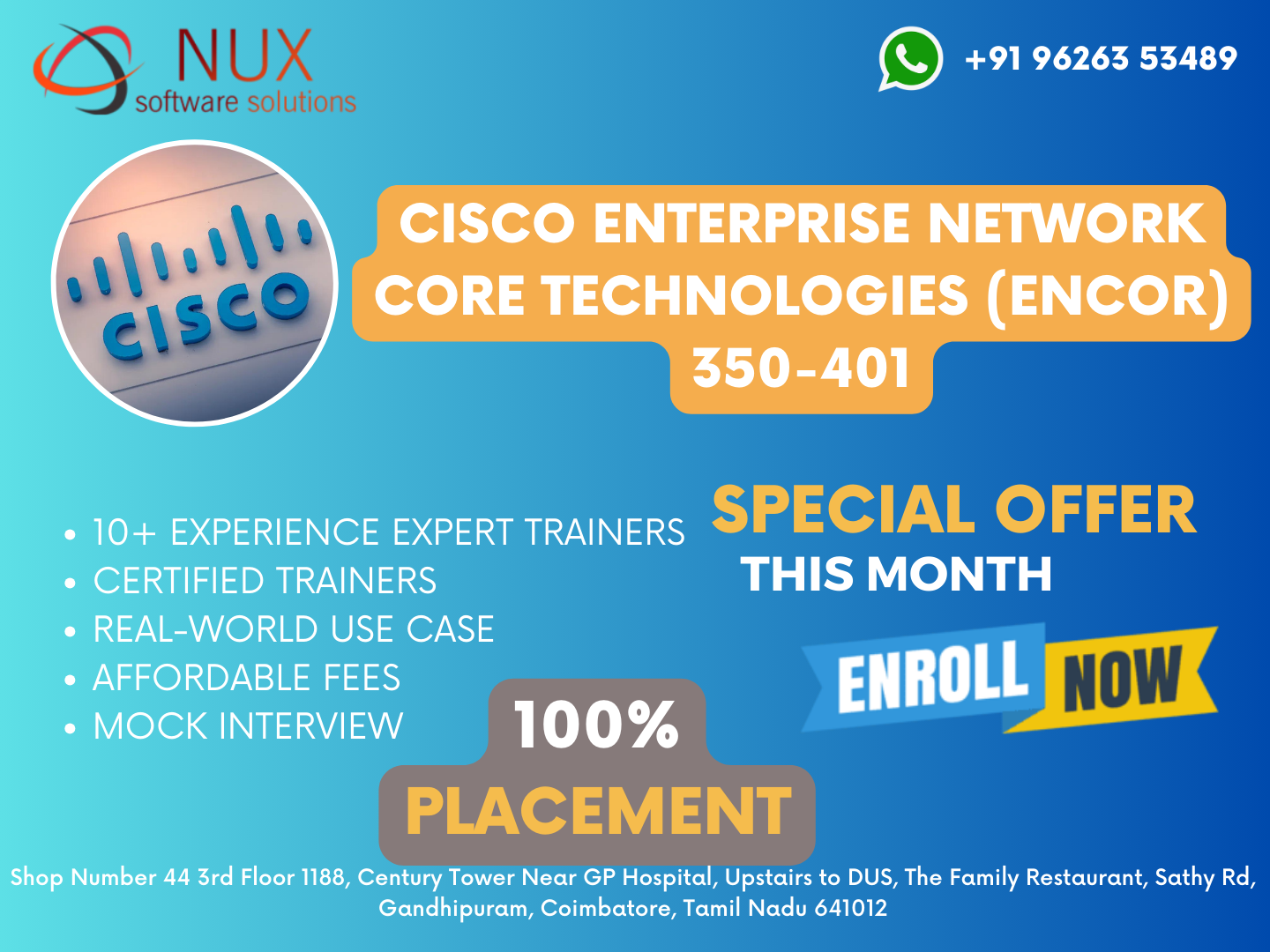Cisco Certified Entry Networking Technician (CCENT)


Cisco Certified Entry Networking Technician (CCENT) Training Institute In Coimbatore: Best Cisco Certified Entry Networking Technician (CCENT) training courses classes delivered by Nux software solutions in Coimbatore. Nux software solutions in Coimbatore has excellent and advanced training programs that will give you better performance & hands-on experience.
Our industry’s expert trainers offer a wide range of skills and experience in their graded areas. The Training centre environment is too good for professional, individual, corporate, live project training and industrial training. Labs infrastructure is advanced and well managed and you can access LAB 24X7 from anywhere.
The training centre has international expert trainers with excellent knowledge and real-time industry experience. Our Training programs combine several innovative learning methods and delivery models. We understand your requirement and it will give you 100 per cent growth in your career, provide cost-effective training programs, and work flexibly for the trainees.
Moreover, we have designed a lab having a well-equipped infrastructure and 24/7 accessible facility that is ideal even for professionals, corporate, individuals, live project training, and industrial training as well.
We have placed above 500 registered companies and 10000+ students and professionals, all are working in reputed positions.


